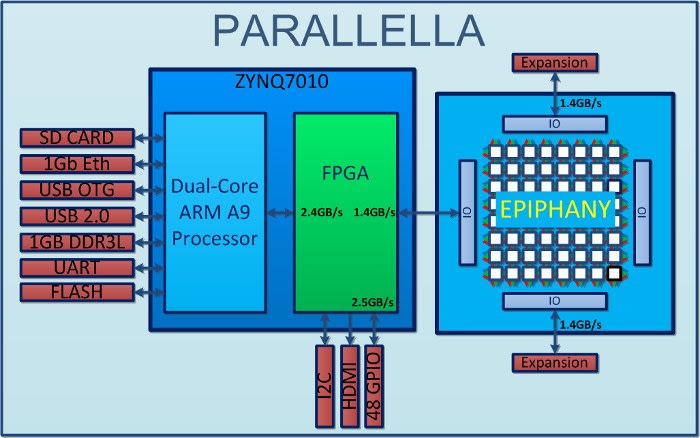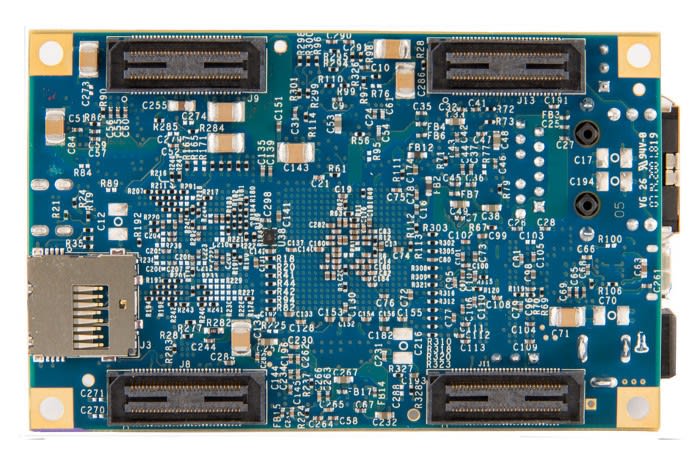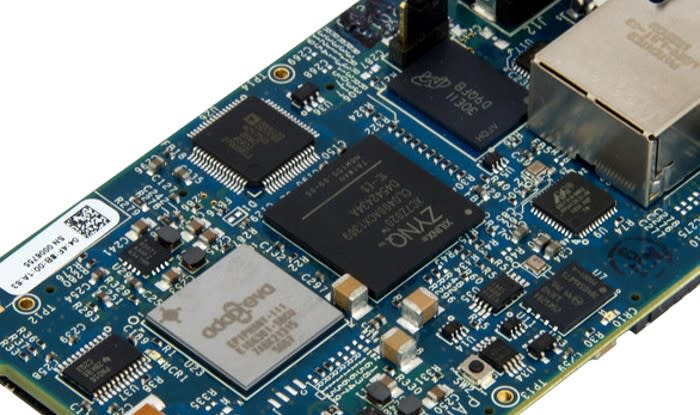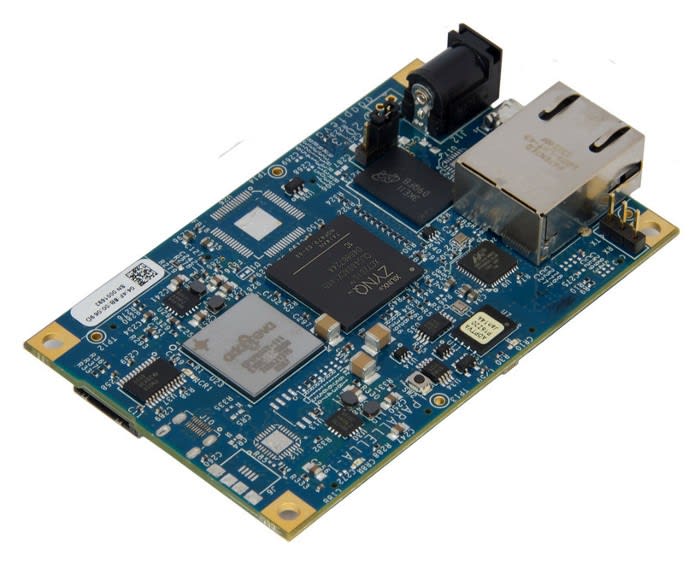Picking the Right Parallella Board
Follow articleHow do you feel about this article? Help us to provide better content for you.
Thank you! Your feedback has been received.
There was a problem submitting your feedback, please try again later.
What do you think of this article?
A look at the different models of Parallella board currently available and typical applications.
The Parallella computer recently went into general availability and can now be purchased in the US from Adapteva and outside the US from RS Components.
At present there are three different versions of the board, with each tailored to slightly different uses. However, before we get on to those differences, first a recap of what Parallella provides!
The Parallel(la) Advantage
Parallella's host processor is a dual-core ARM A9 equipped with 1GB RAM and runs Linux, with Ubuntu being the officially supported distribution. Where it differs from most boards of course is that it also has a co-processor, a.k.a. accelerator, in the form of the 16-core Epiphany chip.
Linux doesn't run on the co-processor, but the Epiphany SDK can be used to create applications which are started under Linux and which then offload certain computationally intensive tasks to run in parallel on 1, 16 or more — if you have more than one board — Epiphany cores.
Since the Zynq system-on-chip (SoC) is used there is also an FPGA available which is closely integrated with the ARM host. By default this is used to implement a HDMI controller and the interface to the Epiphany chip, but it could also be put to a great many other uses.
In terms of peripheral interfaces the Parallella has a UART, gigabit Ethernet, USB and HDMI, and with Micro SD for storage. In addition to which there is plenty of high-speed GPIO (up to 48x single-ended pins) plus expansion to link together the Epiphany chips on multiple boards.
In short: high compute and I/O performance, for low power consumption and a small form factor.
Desktop
The Parallella-16 Desktop (819-4709) variant can be used together with a HDMI display and USB keyboard and mouse to create a standalone computer. Micro SD cards are typically used for storage, although it's also possible to use a USB attached drive, network storage and to even boot from the network.
Using the Parallella in this way makes for a low cost system for use in development and education, and in embedded applications that need to drive a display. However, when running general purpose desktop applications it may not perform as well as a current specification laptop or similar, which is likely to have a faster main processor, more RAM and a GPU.
It should be noted that at present Parallella has only a framebuffer for video output, but work is under way on an open source GPU which can be implemented in the FPGA.
On the underside of the board there are four Samtec high-speed connectors.
These ports carry the FPGA signals (GPIO), Epiphany links and power distribution. Breakout boards for the Samtec connectors include the Zebax ZX131-BTH030, the Porcupine from Adapteva (first samples in testing at the time of writing) and a community contributed design.
Embedded
At a first glance the Embedded variant looks identical to the Desktop board. However, whereas the latter has a Zynq 7010 SoC, the Embedded has a Zynq 7020. The differences here are in the FPGA:
-
85K logic cells instead of 28K
-
560KB BlockRAM instead of 240KB
-
220 DSP slices instead of 80
-
48x GPIO pins instead of 24x
So this particular variant can accommodate much larger FPGA designs, along with more complex and/or higher bandwidth custom expansion.
Micro-Server
Like the Desktop variant, the Micro-Server (819-4699) is based on the Zynq 7010. However, look closely and you will see that a number of component positions have not been populated, since it's intended to be accessed via the network and so USB and HDMI chips and sockets have been omitted.
In addition to not having USB and HDMI, this board does not have the high-speed Samtec expansion connectors on the underside.
The Micro-Server is well suited to use in large Ethernet connected clusters, where you want to keep cost, power consumption, heat and weight to an absolute minimum. Although this variant could just as easily be used as a single network accessible board, or in a smaller cluster.
Side-by-side Comparison
The above table provides a handy comparison of the three different Parallella-16 models.
At this point it is also worth noting that alternate “headless” FPGA bitstreams exist for the Desktop and Embedded variants, which drop the HDMI controller from the design and as a result consume slightly less power and free up space in the FPGA for custom functionality.
Comparisons with Raspberry Pi and BeagleBone
Raspberry Pi has a single-core ARM based SoC and while the newer Model B+ has additional GPIO, it doesn't have as much as the Parallella Embedded board. In addition to which, Parallella's GPIO can run faster and is connected to an FPGA where custom interfacing can be implemented. Raspberry Pi has less RAM, only 100M Ethernet and, of course, no multi-core accelerator.
However, the Raspberry Pi does benefit from a GPU, is cheaper and has been around longer and as a result of which there are a wealth of peripherals and add-ons available. Not to mention that it has an extremely large and incredibly vibrant community, which is a fantastic resource for novices.
The BeagleBone Black (BBB) is in the same price bracket as the Raspberry Pi and there are plenty of comparisons on the web, but in short it has a more powerful CPU and less powerful GPU. However, the BBB does have more GPIO than the Pi, but again with less flexibility than Parallella.
And what about Arduino? Well, that's a different story altogether and I have previously put together a comparison of Arduino with Raspberry Pi.
Summary
The Parallella-16 Desktop will be sufficient for most applications and is probably a good bet if you're not sure which one to go for. The Embedded variant provides a good amount of extra capacity for applications with custom FPGA designs and interfacing. While the Micro-Server board is well suited to use in larger and highly optimised Ethernet connected clusters.
While it's tempting to draw comparisons with other platforms and to ask questions such as, “Which is the best?”, the answer, as it invariably does, depends on what it is that you want to achieve. Rather than competing, Parallella, Raspberry Pi, BeagleBone and Arduino complement each other, providing solutions each with their own benefits and a continuum of learning opportunities.
Parallella Community Manager







